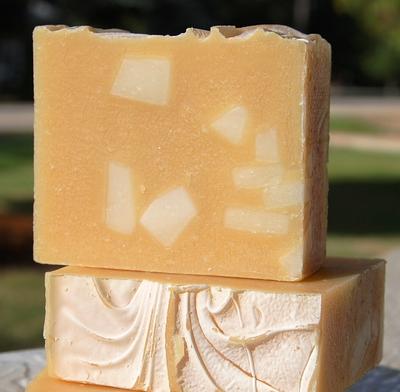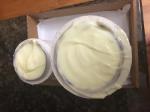Decorative tops and soda ash
by Suzanne
(Minnesota)

Example of soda ash
I love all the beautiful tops--thick swirls etc but how do you deal with soda ash? I have always laid plastic wrap directly on the soap but did a thick swirl on the top of my last batch so didn't and my swirls look good except for the soda ash. What do I do to prevent this or correct it once it is already on the soap. Thank you for any help.
Answer:
There are a couple of things you can do to help with preventing soda ash.
When you are ready to insulate the soap you can spritz the top with rubbing alcohol.
Once the soap has reached a full gel, remove the blankets, etc and allow the excess moisture to evaporate. I like to place a fan pointing at the top of the soap so that the moisture is blown away from the soap and does not condense back on the soap.
And finally...sometimes no matter what you do the soda ash will still be there. I have come to embrace it. In some cases it actually enhances the look of the soap. It also washes off with the first use and does not harm you. Take a look at the photo I have added to this page. I actually like the white contrast that the soda ash adds. Often soda ash on the peaks of the top texture will rub off giving an even more interesting look.
Cathy
Comments for Decorative tops and soda ash
|
||
|
||
|
||

